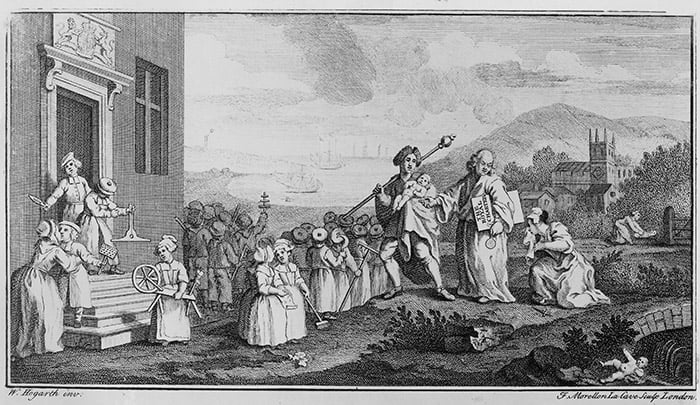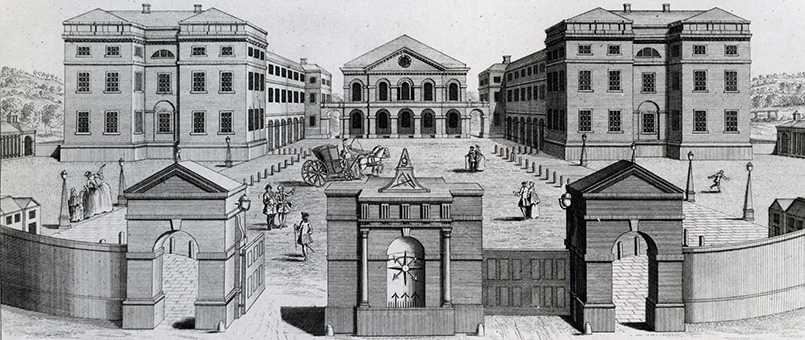
The story of Britain’s first home for abandoned children
The extraordinary story of how one man’s vision and perseverance improved the lives of the most vulnerable, and the unexpected artistic and musical benefits of his philanthropy.
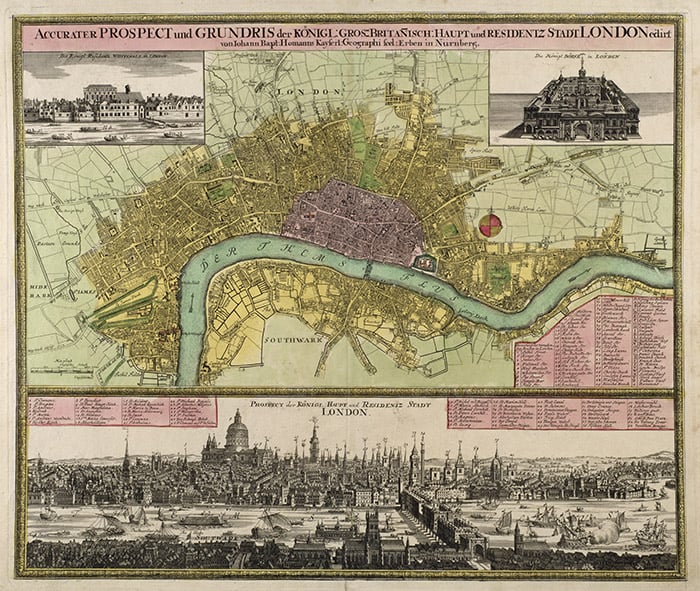
Map and Prospect of London, c.1710 (hand coloured engraving) by Johann Baptista Homann (1663-1724); London Metropolitan Archives, City of London
Early Georgian London
London in the first decades of the 18th century was just the City, Westminster and Southwark, with Kew Palace accessible by river. Fields lay north of Oxford Street and the villages of Marylebone and Knightsbridge were nestled in open countryside.
After the return of the court to St James’s at the Restoration, followed by the devastation of the Great Fire (map above), there were construction works everywhere as the capital of ‘Great Britain’ flourished and expanded.
But it wasn’t just churches and elegant squares for the aristocracy; in an outpouring of charity, new hospitals were built for the sick. And, for those who had fought for their country and now needed refuge, there were the Royal Hospitals at Chelsea and Greenwich.
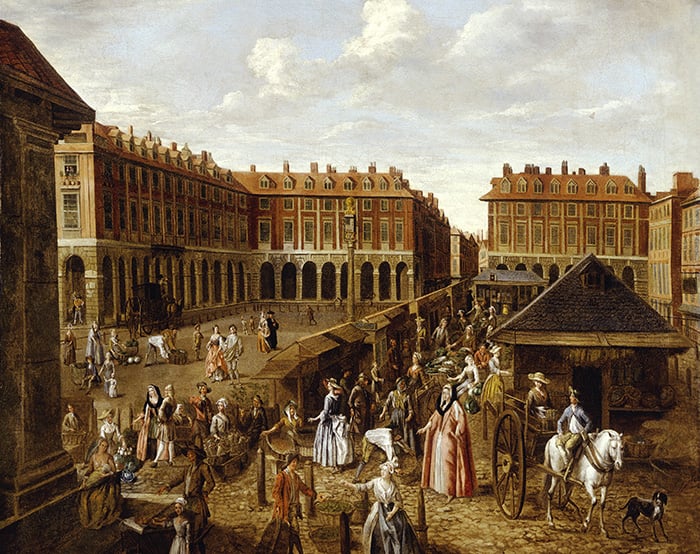
Covent Garden Piazza and Market, 1726-30 (oil on canvas) by Joseph van Aken (c.1700-49) © Museum of London
Parish workhouses were also established, though these were less beneficial. Nearly all children in the workhouse died before the age of five and babies perished on the street at an alarming rate. The slums of London were wretched, especially the rookery around St Giles where the underclass eked out a precarious existence.
Thomas Coram
Thomas Coram retired to England in 1722 after mixed success in America. He was an outspoken sea captain appalled at the sight of abandoned babies on the streets of London who were ‘left to die on dung hills’; he set out to find a remedy. He began by enlisting the support of influential, titled ladies in order to petition the king for a charter, which he finally received from George II (below left) in 1739 after seventeen years vigorous campaigning.
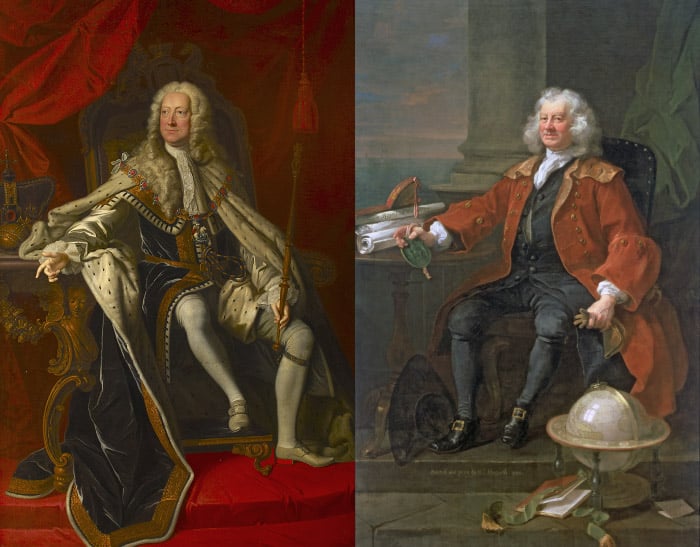
Left – King George II, c.1744, Thomas Hudson (1701-1779) (studio of) / Cliveden, Buckinghamshire, UK / National Trust Photographic Library
Right – Portrait of Captain Coram (c.1668-1751) 1740 by Hogarth / © Coram in the care of the Foundling Museum, London
William Hogarth’s portrait of his friend (above right) was the first painting given to the Foundling Hospital, of which Hogarth was also a founding governor, designing uniforms, stationery (his sketch for subscriptions below), and becoming wet nurse supervisor for Chiswick. He gave it together with a personal donation of £120 in 1740, months before the first thirty children were admitted to temporary premises in Hatton Garden. It shows Coram as a down to earth man of action, not in a wig as was the fashion, surrounded by objects which were meaningful to him – a globe to signify his sea-faring, the Royal Charter, ships and the sea behind.
Hogarth encouraged other English artists such as Joshua Reynolds and Allen Ramsay to donate work which the fashionable wealthy visitors could admire in the public rooms of the hospital. Before the existence of the Royal Academy or any other form of public art gallery, this was both philanthropic and promotional.
The Foundling Hospital
The huge twin wings of the Foundling Hospital (below left) rise from Lamb’s Conduit Fields in a roundel by Richard Wilson, c.1746 which still decorates the Court Room (preserved now in the museum), alongside seven views of other well-regarded London charitable institutions from the period. They place Thomas Coram’s foundation literally between St George’s, at an equally green Hyde Park Corner and a barely changed Chelsea Royal Hospital.
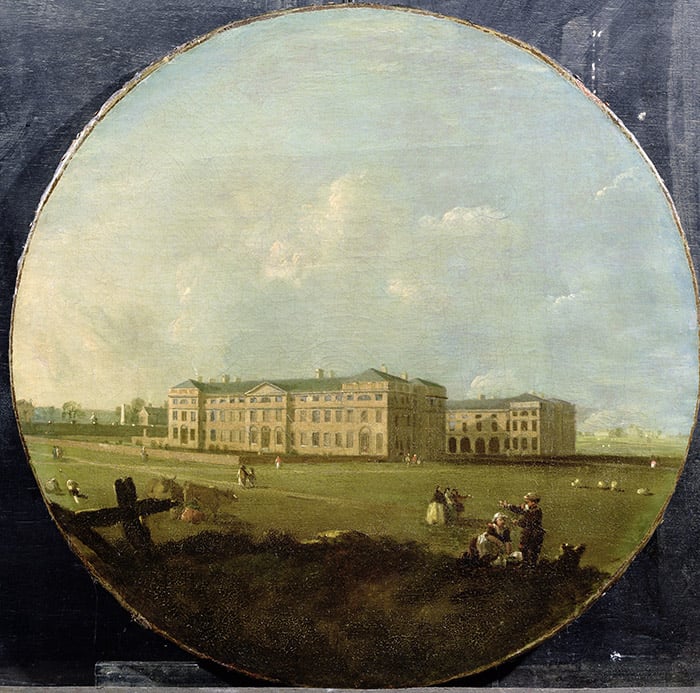
The Thomas Coram Foundling Hospital, c.1746 by Richard Wilson © Coram in the care of the Foundling Museum, London
Charterhouse was painted by a young Thomas Gainsborough. Hogarth designed the room to impress potential donors, encouraging them to give generously; artworks from William Wilton’s Rococo stucco ceiling to large religious works on the theme of charity and children were all donated by him and other artists who were keen to both help the cause and to showcase their skills.
Dating from the same period are the poignant tokens left with babies by mothers forced through circumstance to give them up to a better life, so that in the unlikely event of their being able to reclaim them later, any child could be identified. The small items reveal much about the lives of ordinary women, their daily accoutrements and even the fabric of their clothing.
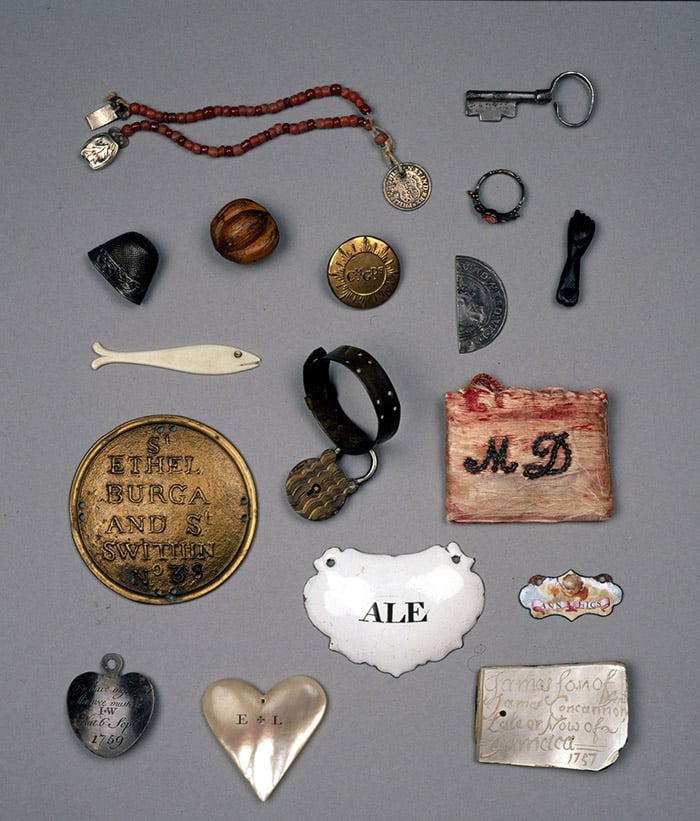
Tokens given by mothers to their children on leaving them at the Foundling Hospital – The Foundling Museum, London, UK
George Frideric Handel
In 1749 the celebrated composer Handel offered the governors a benefit concert to help pay for the Foundling Hospital chapel and wrote a special anthem for the occasion which incorporated the Hallelujah Chorus. With the words ‘Blessed are they that consider the poor and needy … they deliver the poor that crieth, the fatherless’ he appealed to the audience to support the hospital.
The following year Handel donated an organ to the chapel, conducted a performance of the Messiah and was himself made a governor. Until the 1770s the work was performed every year there, raising a huge amount of money because it had become such a fashionable place to visit and be seen. Handel continued to conduct these concerts himself until his death, when he left a fair copy of the score to the Foundling Hospital (above) so they could continue to make money performing it.
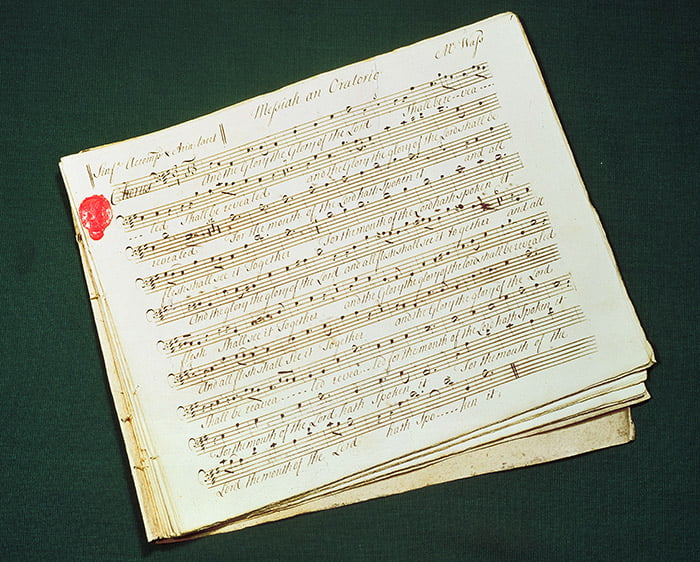
Original score of The Messiah by George Frederick Handel (1685-1759) © Coram in the care of the Foundling Museum, London
Images and Licensing
Images from the Foundling Museum collection are available for licensing via Bridgeman Images.
Contact uksales@bridgemanimages.com with enquires regarding images featured in this blog post.
Find out More
Visit the Foundling Museum at 40 Brunswick Square, London WC1N 1AZ
Exhibiton: Drawing on Childhood. 22 Jan 2016 — 01 May 2016
Save
Save
Save
Save
Save

